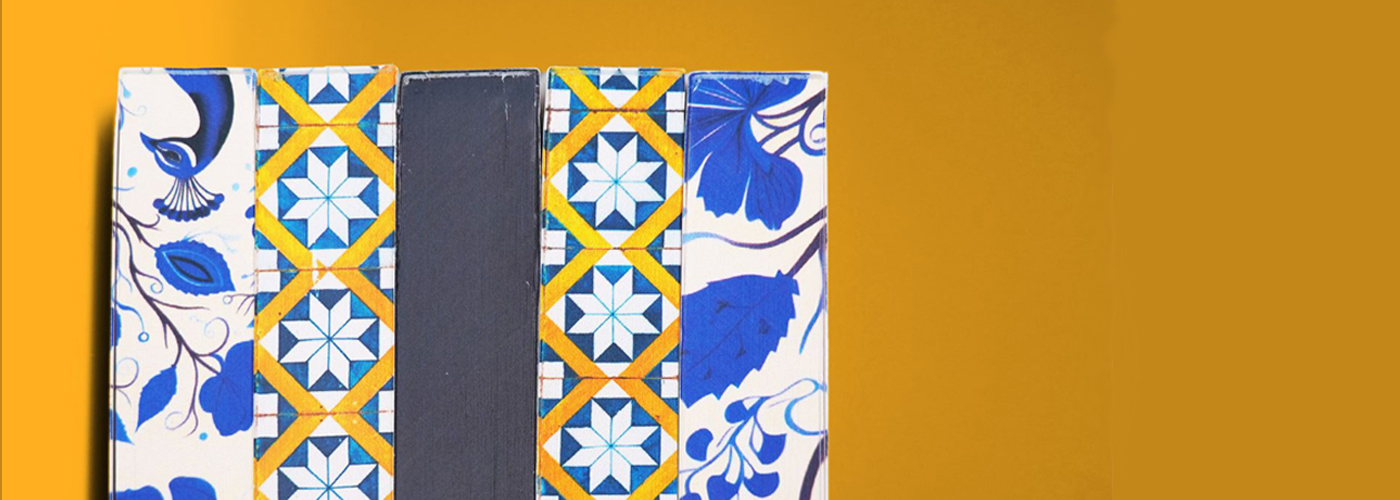
You might think we have exhausted the topic of book enhancement. Far from it! Technological advancements are providing novel solutions, often heavily drawing on old artisanal embellishing methods. And this is the case with enhancing book edges.
|
You might think we have exhausted the topic of book enhancement. Far from it! Technological advancements are providing novel solutions, often heavily drawing on old artisanal embellishing methods. And this is the case with enhancing book edges. In olden times Edge-painting has been known for ages. Who has not come across a book with gilded or coloured page edges? Covering the edges with a gold or silver leaf was one of the noblest ways of decoration. Another common method consisted of dyeing the paper edges with red lead pigment, which produced a red-orange colour. All three edges of a book could be decorated this way, however most often only the top one. There was a practical reason for this: applying paint – quite frequently with a coat of wax or shellac varnish – protected the book block against the adverse impact of dust and dirt. Book edges were also decorated by marbling. The principle was similar to that used in the case of making marbled paper, which was often used for casewraps or endpapers. The edges of a book block were brought into contact with the surface of some sticky solution on which a mixture of different dyes created unique patterns.
Today we can witness a certain comeback of old techniques. Of course, we do not use poisonous lead or any time- and labour-intensive decoration methods, but the results are just as spectacular. Edge staining Applying a dye to three edges of a book block, but normally just the top or side one, is a very popular form of edge treatment. Instead of dyes, metallic film can be used. First, the edge is polished and then the film is applied in a similar way as when hot-stamping, i.e. by pressing at a high temperature. The result is a gilded or silvered edge, like the edges of old books. However, painting or gilding is not only done for aesthetic reasons. Just like it used to be hundreds of years ago, the extra coating protects the book block from dust. Nowadays, such noble gilding or silvering of the edges works particularly well in various reprints, albums, prayer books or the Bible itself, or deluxe planners or notebooks. Staining all the edges of a block in one colour will certainly add style and finesse to the book. Just imagine The Scarlet Letter with bright red page edges, or a series of books where each volume has a different block colour. That would surely turn heads!
Edge printing It's a whole new level! Book edges (even with rounded corners) can be printed with any graphics you wish: illustrations, patterns, ornaments or text. These can be closely related to the content of the book or added just for extra decoration. Whichever the case, the book gains a lot in appearance. Design-wise, edge printing is only limited by the designer's imagination. Applying colour gradients and 100% solids, extending the cover art onto the edges – all this can be done.
Printing on the block edges is not reserved for single books. It can attractively complement a series of books or multi-volume publications. It is also perfect for artistic notebooks or stylish planners.
Thanks to the use of a state-of-the-art book edge inkjet printer, more and more print shops can print the edges of even a few copies of a book (and it is still cost-effective). If you are contemplating a special limited edition of your book for a very small group of readers, just ask for your printing supplier in the near. |
| Tag:book edge,edge painting,edge printing |
Please Leave Your Messenger Here!
We will do our best to make your business prosperous!




